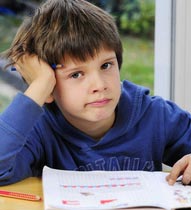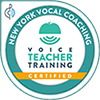
Dyslexia
What is dyslexia?
Dyslexia is a literacy disorder. It starts with school aged children and can extend to adulthood. It is to be noted that this disorder is not linked to any intellectual disabilities or to any visual or auditory impairments. Many researches highlight the probability of the existence of different dyslexia profiles. On the one hand, those who have difficulties decoding sounds to match their letters and blending them into syllables (phonological dyslexia), and on the other hand, those who cannot properly memorize the visual form of the written words (surface dyslexia).
What are the clinical Signs?
The signs that a child with dyslexia may present are the following:
- Difficulties in identifying certain letters, especially those that visually or orally resemble each other (example: p/b, m/n).
- Difficulties in corresponding a sound to its proper grapheme (example: the sound « k » refers to the letters “c – q – k”).
- Difficulties in blending, which means reading syllables by blending their sounds to be able to read words (example: to read « b » then read « a » in order to read “ba”).
- Difficulties in sight reading, which means identifying and visually reading regular and frequent words (example: banana) as well as irregular words (example: could).
- Intermittent reading that includes frequent errors.
- Slow and hesitant reading.
- Difficulties in understanding sentences in elementary school.
- Difficulties in understanding the meaning of a text in elementary school.
- Spelling errors (regular, irregular, visual and auditory confusions of sounds and letters).
Nevertheless, we must keep in mind that a child with dyslexia will not necessarily present the entirety of the above-mentioned signs, rather some of them, depending on the affected reading strategies (blending and/or sight reading).
PS: Dyslexia may often be associated with dysorthographia, a learning disability relative to difficulties with spelling.
How to act?
Dyslexia is a chronic disorder. However, when providing the dyslexic child with proper care, they may have easier access to reading and writing. Early screening as well as reeducation are paramount in order to provide the child with proper assistance and support during their school years. Treating dyslexia involves sessions with speech therapists. Thus, a speech therapy assessment will help orient the reeducation with regards to the specific needs of each child. The objectives of speech therapy would nonetheless articulate over several axes:
- Reeducating reading and writing strategies as well as underlying difficulties by establishing strategies and using specific methods that will help the child learn in an easier way and at their own pace.
- Guiding the parents and providing them with the necessary information in order to understand their child’s difficulties.
- Providing the parents as well as the educational professionals with aid and adapted modifications in order to support the child in their learning and in their daily life.
The management of dyslexia is multidisciplinary. Parallel to reeducation through speech therapy, the dyslexic child will need to undergo a follow up with a psychomotor therapist in order to mend the underlying difficulties (example: attention and memory) and/or the associated difficulties such as disorders in writing (example: illegible handwriting).
Moreover, difficulties during schooling that the child suffers on a
daily basis may have an impact on their emotional life, and, consequently, require
psychological support in order to help them confront and overcome the
challenges they may encounter.


